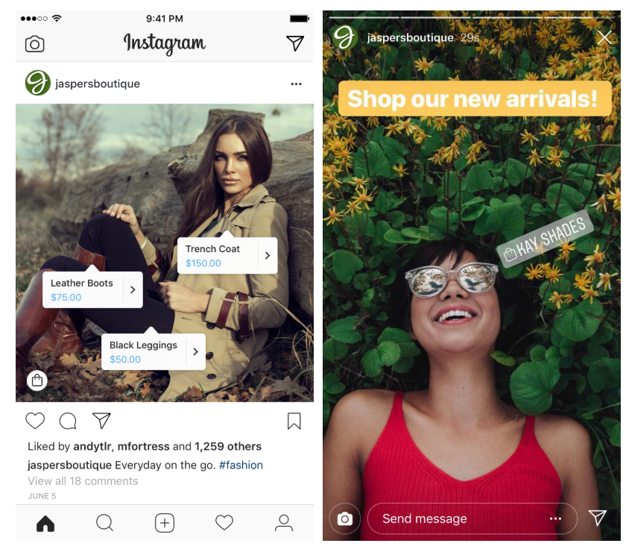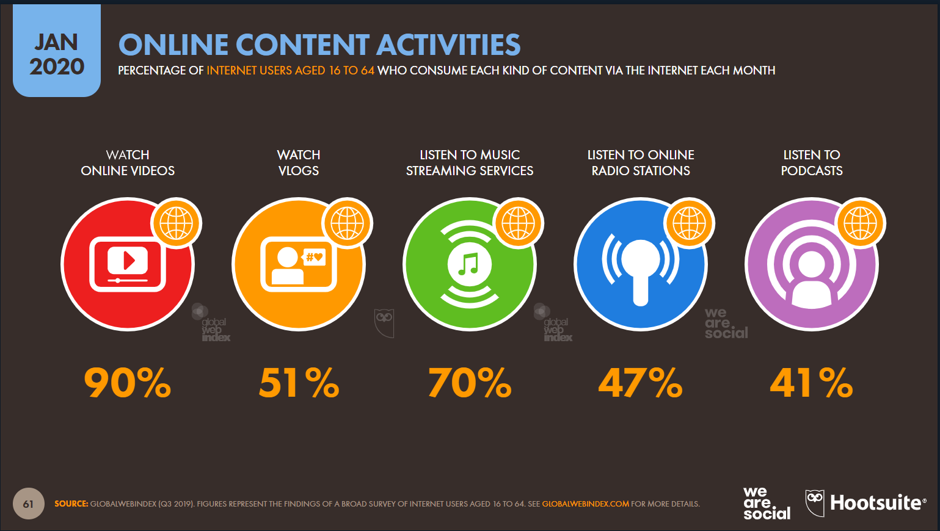So what do the digital marketing trends look like for 2020? Today we’re more and more comfortable using the wide array of functionality on our smart phones, smart-home apps and smart personal assistants, such as Alexa and Google to help us manage our lives. So, are we making the same shift to using tech in marketing? The simple answer is yes, but what do the digital marketing trends look like?
Digital marketing is an essential and integrated activity of an overall marketing strategy today. As its name suggests, it embraces all things digital. It includes SEO, social media, marketing automation, websites and plugins, PPC and a lot more. The advancements in technology are constantly changing, new technologies, techniques and with the ever-changing Google, LinkedIn and Facebook algorithms it’s a full-time job to stay up to date.
If you’re out-of-date with your digital marketing trends, its likely you’re limiting your brand, your reach and your reputation. Its easy to fall behind with what’s new and what’s working, but your target customers and your competitors are not.
Here’s some of the trends shaping digital marketing in 2020 that you should pay attention to and some intelligent marketing pointers.
Voice Search revolution
As a consumer, the way we use our devices to search for what we want to know, where to go, what to do and buy is getting smarter and more personalized. We’re now seeing advertising that includes references like “ask Alexa” to encourage you to use voice search.
Voice search is growing exponentially, offering consumers a more natural, intuitive, conversational and hands-free way to search.
- Over 20% of UK households have smart speaker. That translates into 5.8 million households and a reach of over 10 million users.
- Over 25% of Americans own a smart speaker
- A Gartner study predicts that 30% of all browsing sessions will be include a voice search by 2020
- Google reports that 27% of the global online population is using voice search on mobile
- aireports that over half of all adults have used voice search
- 52% of smart speaker owners keep them in a common room such as a living room. 25% of these people keep them in their bedroom, while 22% keep a smart speaker assistant in their kitchen (source: Google)
- 31% of smartphone users worldwide use voice-activated search, like Siri, at least once a week
This means there is both an opportunity and a need for businesses to integrate voice search into their marketing utilising voice-friendly search functions.
Think about what questions does a person ‘ask’ when hunting for a specific product? This is likely to be different to a typed search.
Shoppable Posts and content
Shoppable content means any form of content that offers an opportunity for the user to buy the products straight from the content. The ability to buy what they are viewing in real-time.
Shoppable posts on social media are not new, but in 2020 we’ll see a significant increase in their use. As Instagram continues its journey into becoming a more business-friendly platform. And Pinterests buyable pins. Pinterest won’t take a % from your sales if you use the feature. Whats neat is you drive sales without ever getting customers to navigate to your website. Capture the impulse and the immediacy of buyers searching.

(Source: instagram)
- According to Instagram, the number of active worldwide users is 1 billion
- 63% of Instagram users login every day (source: hubspot)
- 90% of them are following shopping brands
- 60% of Instagram users say they discover new products on Instagram
- a survey of over 4,000 Pinterest users, showed 70% said Pinterest helps them find new products
This approach creates a totally seamless online shopping experience, reduces abandonment and delivers on immediacy.
Relevant and engaging videos
Video was a digital marketing must in 2019 and it will continue to be a must in 2020. The trend is on the rise across all social media platforms, with video-viewing and engagement continuing to increase. This means that video is a necessity when it comes marketing in 2020.
Don’t be fooled into thinking that just any video will hit the mark. Customers need to be engaged, entertained or informed by videos if you’re going to get their attention.
According to Hootsuite’s report, The Global State of Digital 2020 states that over 90% of internet users aged 16 to 64 watch videos and 51% watch vlogs.
Here are a few more compelling numbers:-.
- 81% of businesses use video as a marketing tool — up from 63% over the last year (Hubspot)
- 6 out of 10 people would rather watch online videos than television (Google)
- By 2022, online videos will make up more than 82% of all consumer internet traffic, that’s 15 times higher than it was in 2017 (Cisco)
- YouTube is the second most popular website after Google (Alexa)
- Users view more than 1 billion hours of video each day on YouTube (YouTube)
- Viewers retain 95% of a message when they watch it in a video, compared to 10% when reading it in text (Insivia)
- 72% of customers would rather learn about a product or service by way of video (HubSpot)
Personalization
Take customer interactions to the next level in 2020. Consumers, including you and me, are tired of seeing generic ads that don’t have anything to do with us. Personalized experiences will increase conversions and accelerate sales.
Intelligent personalization and marketing automation have improved digital marketing outcomes considerably. People are more welcoming of technology when it adds value to the overall customer experience. But they become disengaged and irritated with the poor use of technology in many interactions. Savvy marketers need to better understand which interactions customers want to be digital and which they want as human communication or other ways. Buyer journey maps now include ‘micro-moments’ tied to the preferred form of communication or interaction.
Customers are starting to expect personalization, whether that’s B2C or B2B and there are plenty of ways to do that with sophisticated marketing automation solutions. Segmented email lists are one of the most popular ways to personalize your online efforts, which can take into account your persona’s and buyer attributes. A more detailed understanding of your customer segments will enable greater advancements in personalization, targeted email marketing and greater customer satisfaction.
Personalized emails will perform three times better than sending a generic email. Marketing automation tools such as MailChimp, Hubspot, Pardot, Marketo and Oracle Eloqua make this process simple and easy.
If you’re not personalizing your marketing messages, you can expect to be left behind your competitors in 2020.
AI and augmented reality
Artificial intelligence (AI) is transforming the digital world and we’re seeing this in marketing automation software and tools. AI and machine learning (ML) are having a profound impact on marketing activities and are likely to deliver increased opportunities in the future.
Marketing Automation tools have enabled marketers to identify a users specific behaviours to send triggered messaging, like push notifications or emails, with the right content at the right time. AI brings another layer of amazing new possibilities that should lead to improved prospect engagement, with the added bonus of personalization.
AI capabilities can deliver a more granular customer segmentation, retargeting, click tracking, and similar activities.
Augmented reality (AR) is rapidly gaining popularity as a compelling addition to marketing and product promotion. With its growth over the past few years, its quickly becoming one of the of the top marketing trends. AR is already being used by major companies like IKEA. Using their app and AR, customers can see what a piece of furniture would look like in their space before purchasing.
Through advanced data analytics (like predictive analytics) and AI capabilities to adapt to input, marketers can more accurately identify customer and market trends, and measure outcomes in new ways. More importantly they can take action and create activities based on those analytics and outcomes. This should contribute to better understanding of target audiences, more effective marketing and lower costs.
Conclusion
Exciting times ahead with some great opportunities too.
Digital marketing is constantly changing with new technologies, new ideas and new approaches. Some of the trends we’ve covered could be massive game-changers in 2020 and beyond.
To deliver effective marketing for your business you need to include planning your digital presence. But your efforts should also take into account changes in technology and how people behave and interact digitally with brands online.
In addition to the behaviour of your prospective customers, you must also consider algorithm changes from Google, Facebook, and LinkedIn and other places where your target audience hangs out online.
Be bold and try some of these new techniques to stand out and cut through the noise.
Need help identifying what trends would work best for your business and how to implement them, get in touch with Intelligent Marketing hello@intelligentmarketing.uk.com







